In some ways, I think we are all constantly searching for our next big adventure, our next great escape. As humans, we have a real knack for jumping to the subsequent steps, losing ourselves in the “what ifs,” and doing anything and everything within our limited realm of control to shirk the present moment and recklessly fling ourselves into the future version of what we think things should look like.
Perhaps this tendency is just another element that has made 2020 so difficult thus far. Amidst a year where we can’t plan in the same ways we are used to, how do we reconcile our need for certainty, next steps, and the promise of great adventures to come? In other words, if we can’t make plans, then what is there to look forward to? And, if there is nothing to look forward to, then what is the point of it all?
Exposure is so critical in our lives. What we are exposed to—and what we are not exposed to—shapes our values, determines our world views, and broadens our capacity to think creatively and imagine a greater sense of what’s possible. So often we limit our exposure to that which is familiar and comfortable—that which reinforces what we know to be true and thus makes us feel stable, secure, and seen. When we do this though—when we wall ourselves off from bigger, broader, experiences and perspectives—we harden lines of potential flexibility and ultimately stunt our growth. The world shrinks dramatically when we live this way, and even that which lies mere steps from our own backyard quickly becomes foreign, uncharted territory. However, when we step outside these bubbles, when we increase the aperture through which we view the world and broaden our exposure, we are often pleasantly surprised by what we find.
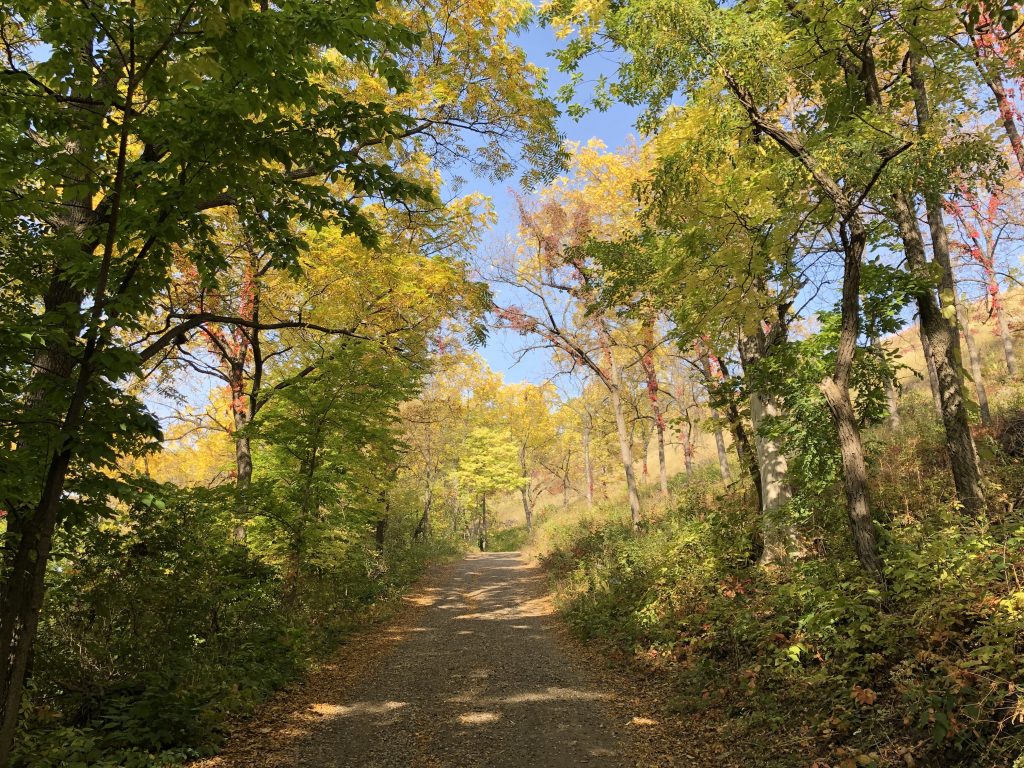
One of the perks of living in a world that is perpetually shut down is that because you have nowhere to go you suddenly have the freedom to do anything you want. And when doing anything you want involves getting out of the house, increasing your exposure, and chasing a sense of adventure, then perhaps there’s nothing more fitting than a road trip. This is the logic my mom and I adopted a couple weeks ago when we decided to venture outside the Twin Cities during our girls’ trip and explore uncharted territory in Red Wing, Minnesota.
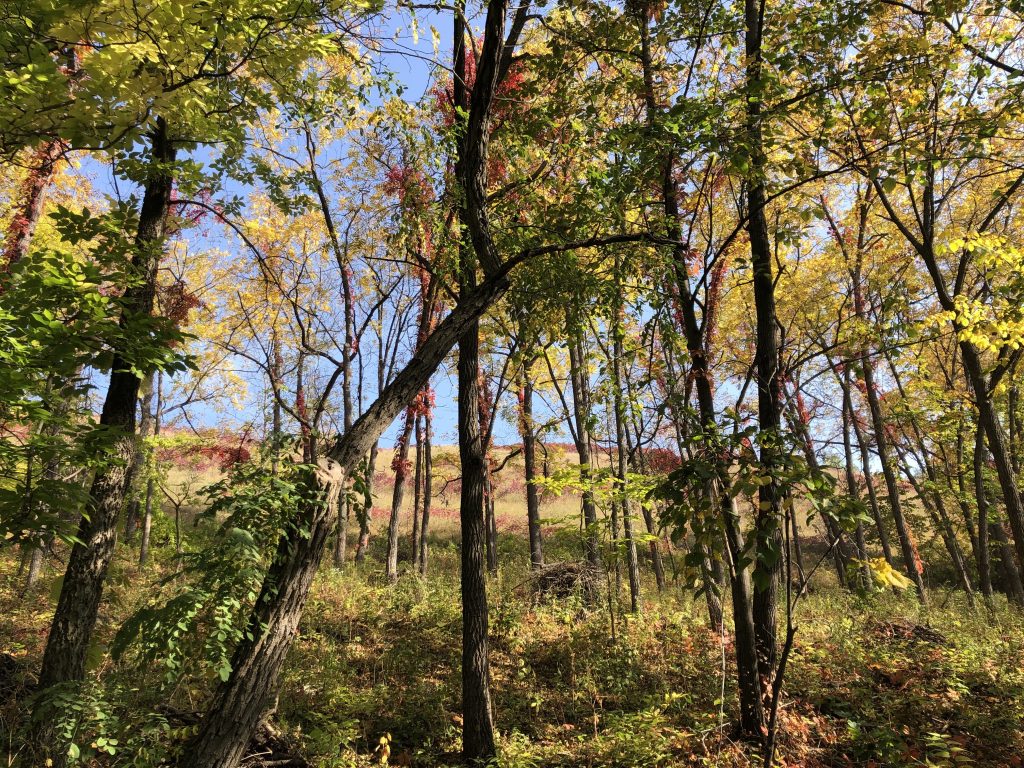
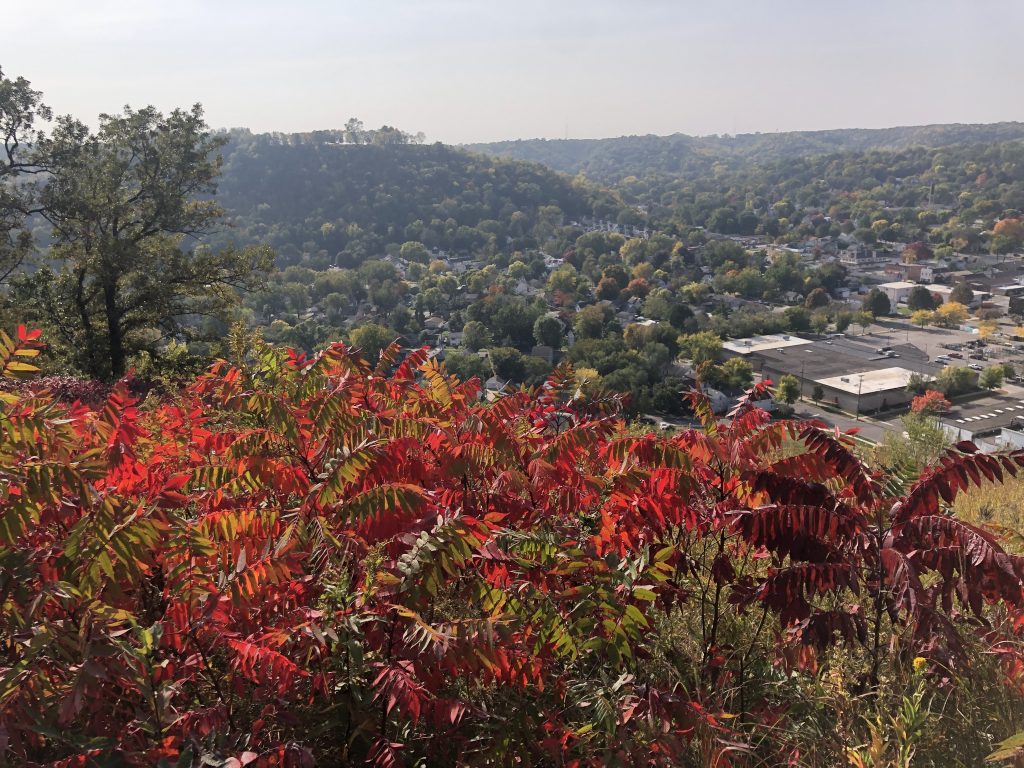
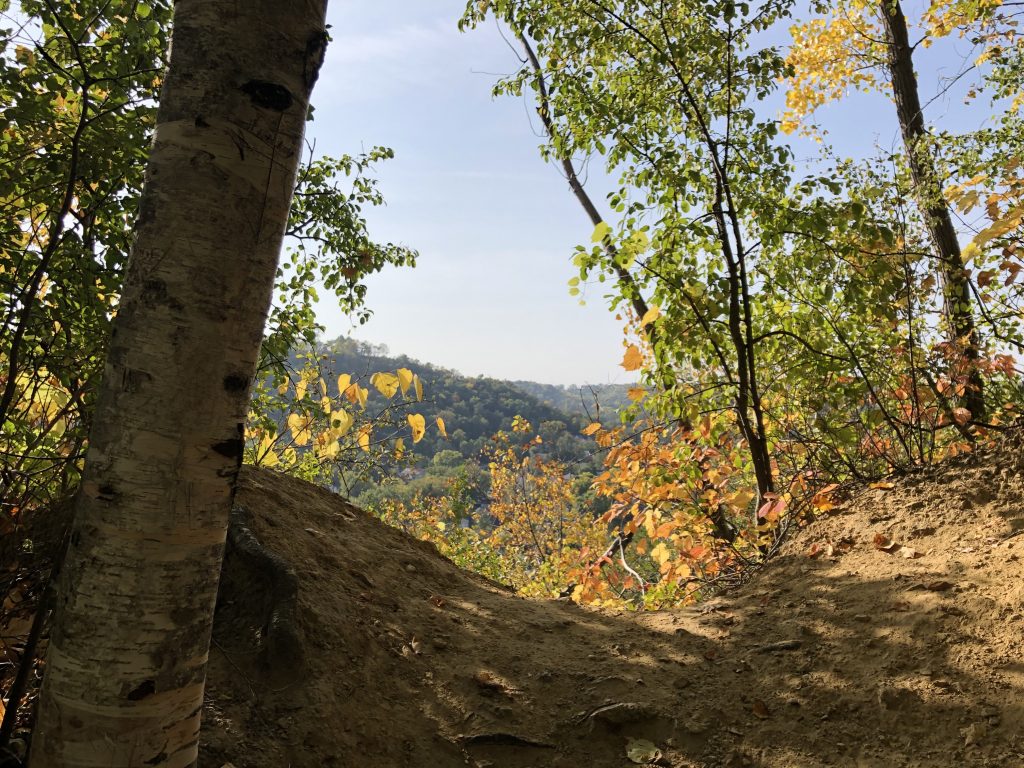
Barely an hour outside the Cities’ limits lies a historic, scenic route surrounded by ancient cliffs, an iconic river, and infectious small-town Americana charm. It’s crazy how a short drive and some great company can transport you to what is essentially a new world in no time at all. Despite Minnesota being the fifth flattest U.S. state—flatter than even Kansas or Iowa—its southeast region provides a striking exception. Spared from the glaciers that once leveled the majority of Minnesota landscape down to bedrock, Red Wing and its surrounding southern sister cities host striking plateaus, jagged limestone cliffs, expansive prairies, and sweeping forests that lie tucked away in deep valleys that are sliced through by winding rivers and lakes. In short, it’s the perfect place for a day filled with adventure seeking and exposure widening.
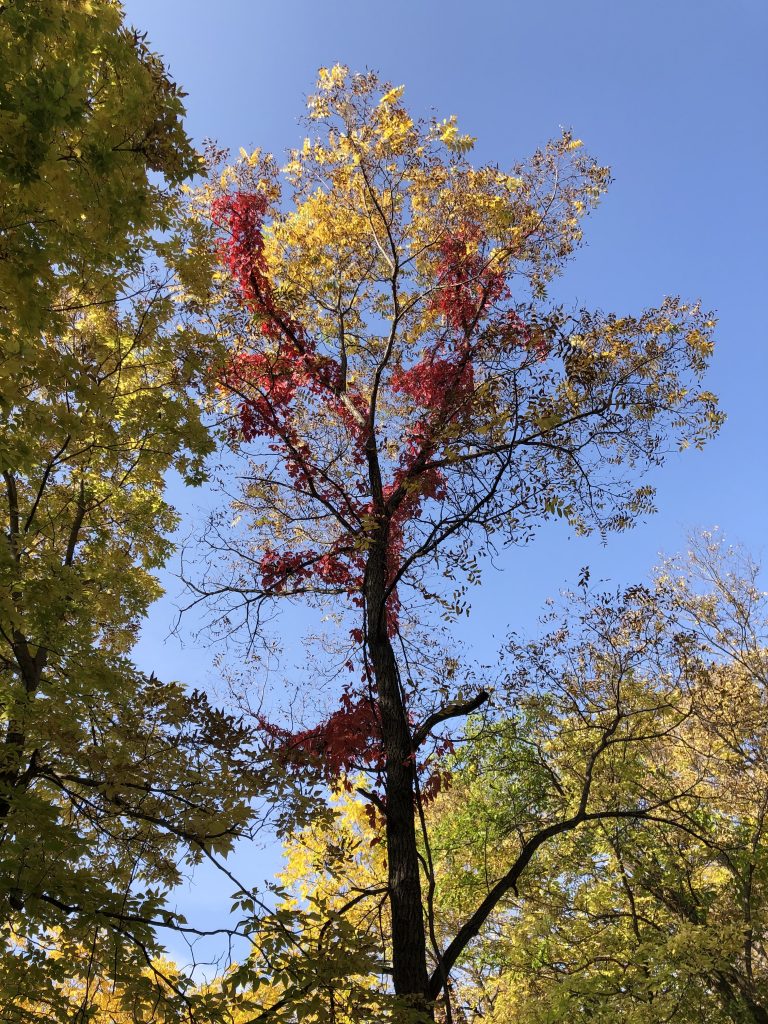
We began our morning with a slow, meandering hike through Red Wing’s Barn Bluff. Now renamed “He Mni Can”—meaning “hill, water, wood”—this 340-foot bluff towers over downtown Red Wing and provides sweeping vistas that vary throughout the hike and stir inspiration from every vantage point. Barn Bluff is composed of a potpourri of Paleozoic rocks including sandstone, siltstone, and dolomite and is capped by approximately 35 feet of sand, gravel, and loess deposited by glaciers. Famed as one of the most notable natural features along the Mississippi, many famous Americans have traversed Barn Bluff including transcendentalist Henry David Thoreau and topographical engineer Stephen H. Long who during an 1819 mapping expedition found that “the sublime and beautiful here blended in a most enchanting manner.” Similarly smitten, 18th century explorer Johnathan Carver characterized the bluff’s views as “the most beautiful prospect imagination can form” and praised a landscaped covered with “verdant plains, fruitful meadows, and… the majestic, softly flowing river.” As we drove up to the bluff, I quickly determined this: Clearly these individuals weren’t wrong.
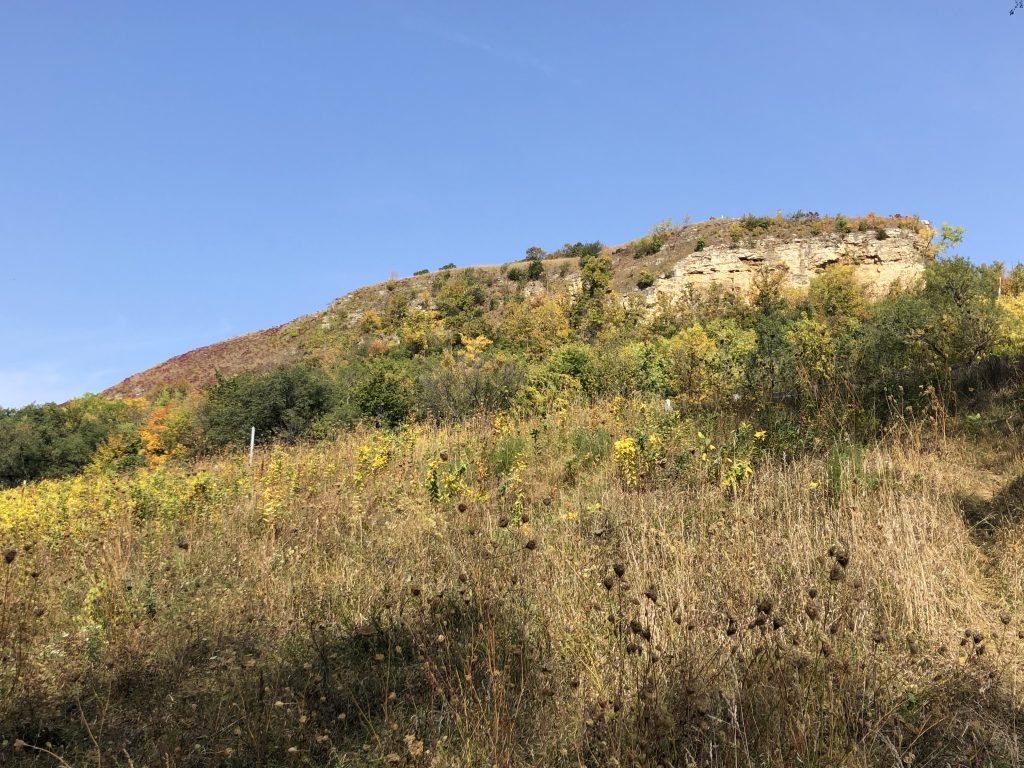
Experiencing Barn Bluff for the first time on a crisp, sunny autumn morning made for an “enchanting” experience indeed. As we climbed the numerous stairs and steep inclines, Mom and I were struck by the intoxicating fall hues and captivating sound of nothingness. While we inevitably passed a few other hikers over the course of our excursion, we practically had the bluff to ourself and welcomed the resulting stillness with open arms.
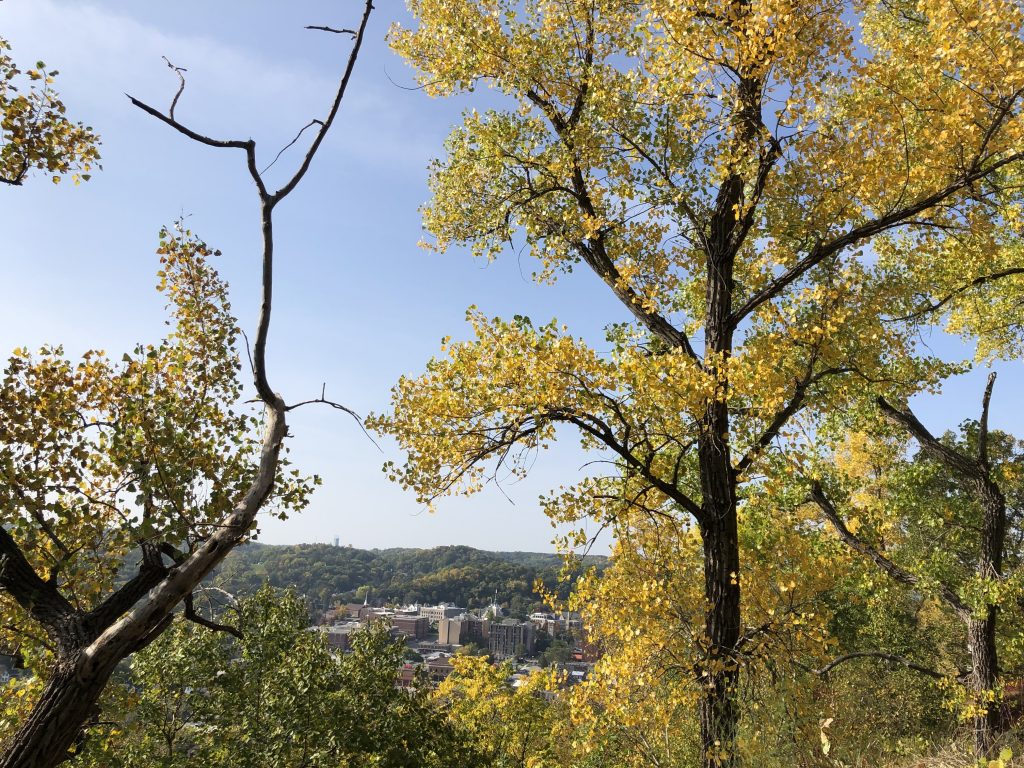
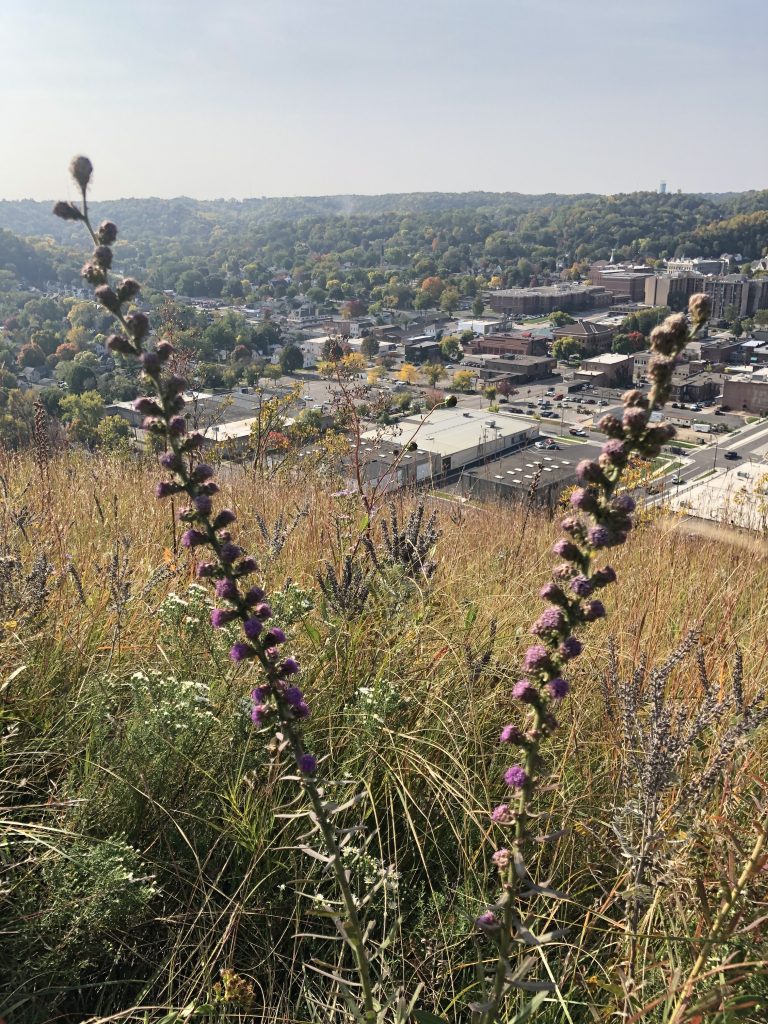
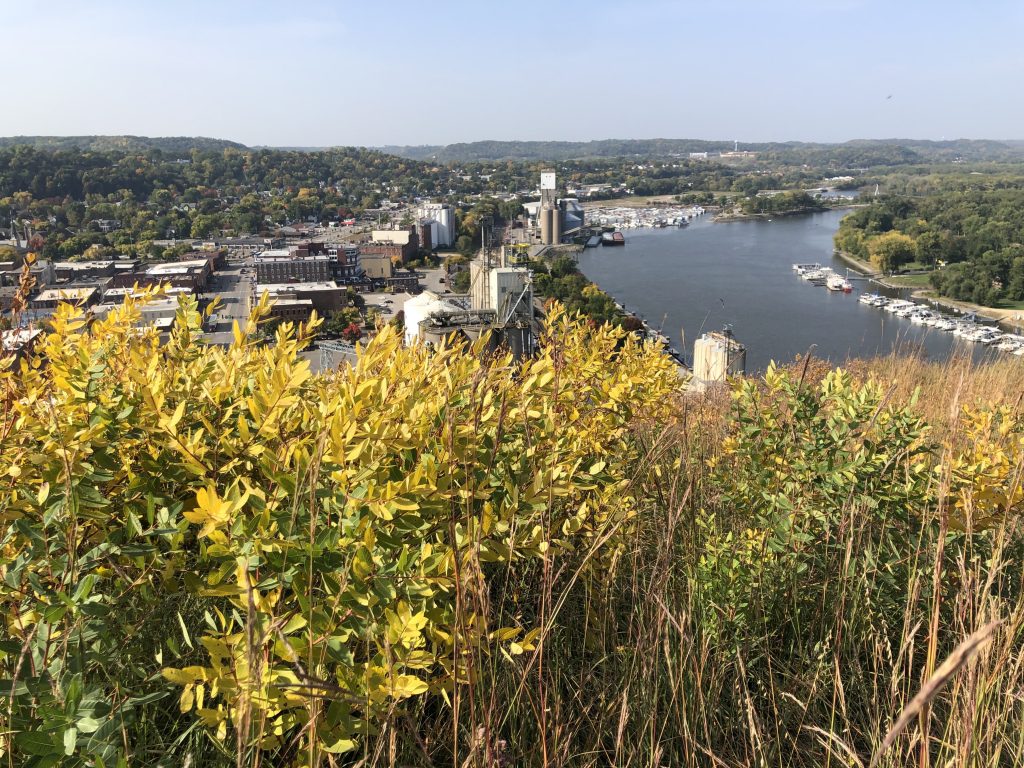
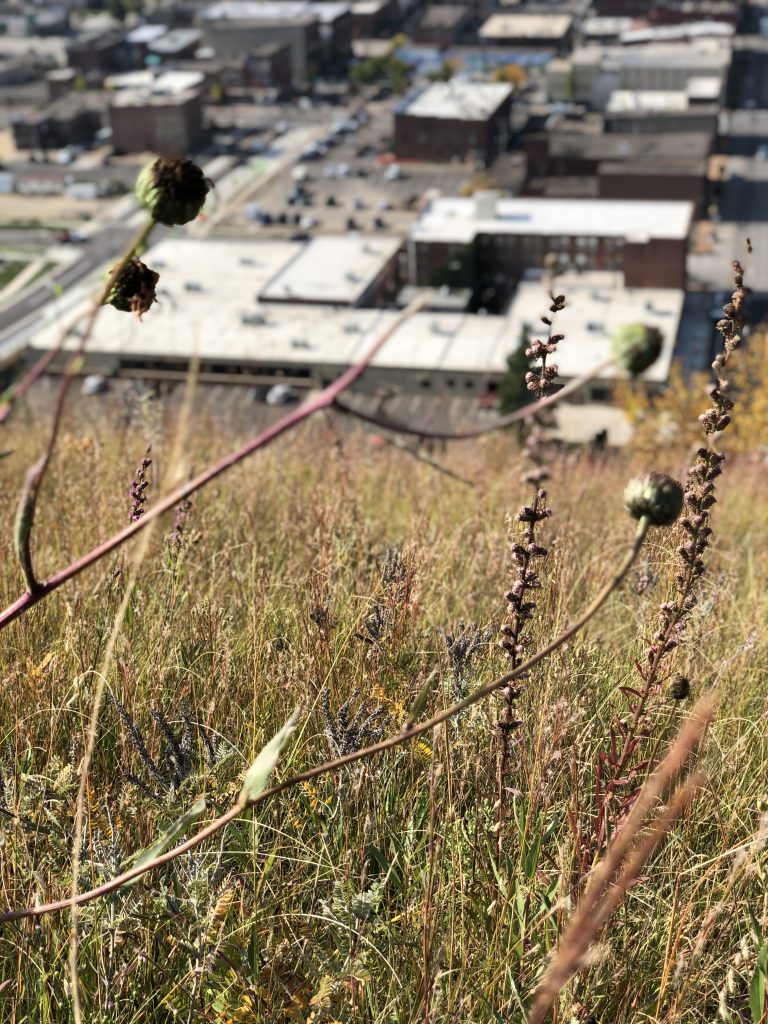
Notably, Barn Bluff’s topography is shockingly diverse and offers an impressive variety of tree and plant life. The western and southern-facing slopes feature prairie terrain with long grasses and open plains that create a striking backdrop to the “blue violet” celestial hues. Meanwhile, the northern-facing slopes offer a completely different landscape teeming with trees, shrubs, and a cooler, wetter environment reminiscent of the Pacific Northwest. We enjoyed our time spent slowly strolling along the path, savoring the landscape that has remained both deeply appreciated and yet widely untouched for centuries.
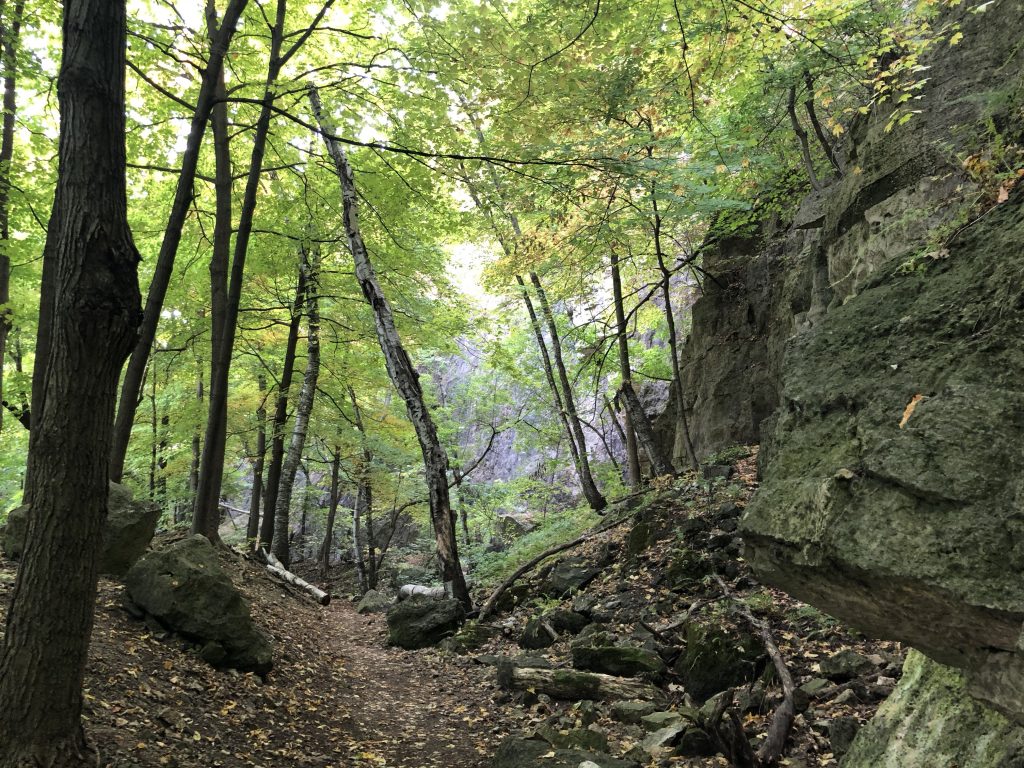
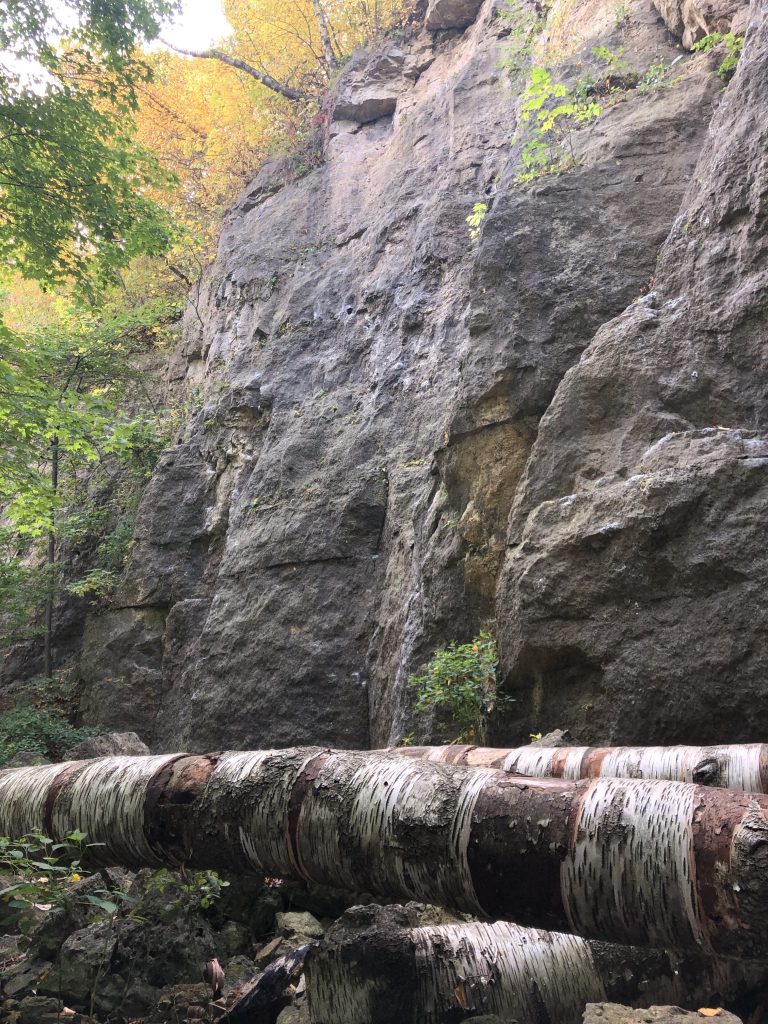
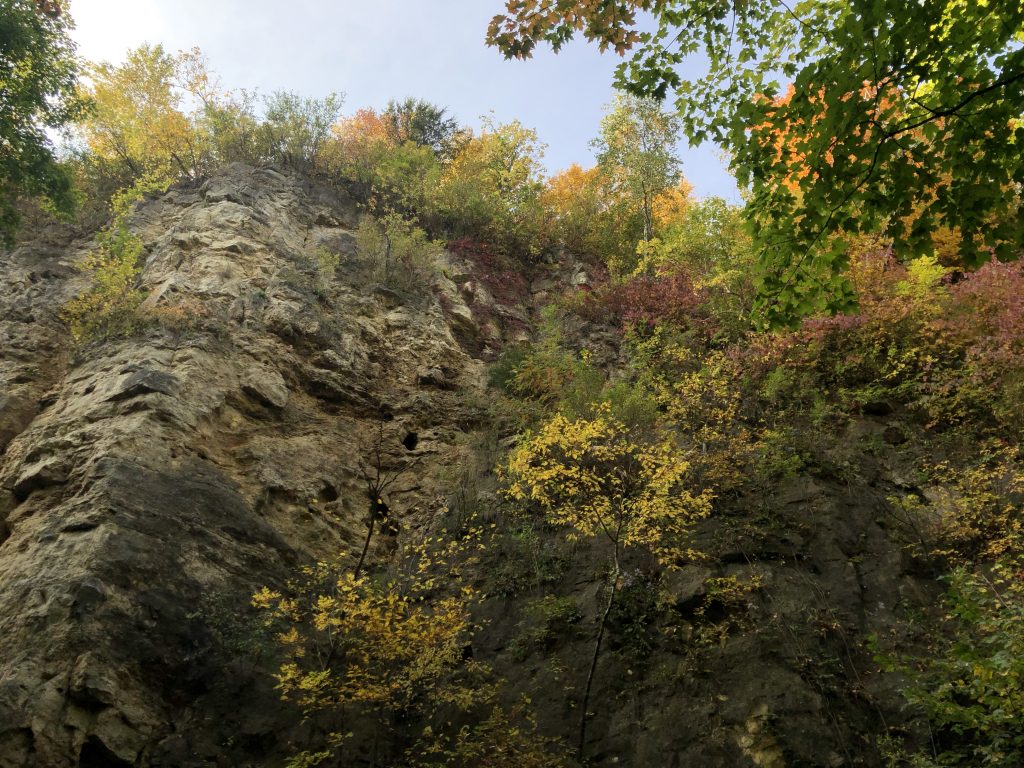
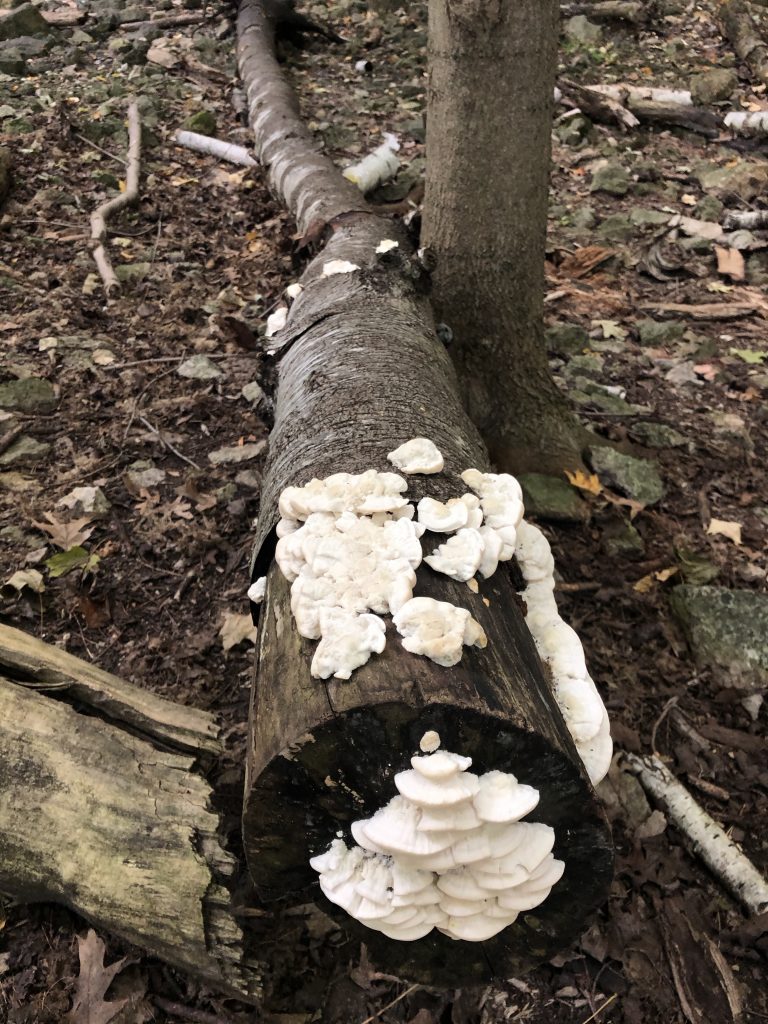
Never getting enough of being outside, we decided to spend the second half of our morning at Frontenac State Park. Only a few miles down the road, Frontenac sits on the shores of the Mississippi River and is renowned for its history and unique birdwatching opportunities. In fact, the park is a birdwatcher’s paradise, and more than 260 bird species have been spotted in the Frontenac’s diverse bluff, prairie, floodplain forest, and upland hardwood forest landscapes.
The majority of the park consists of a 430-foot-high, 3-mile-long steep limestone bluff that overlooks Lake Pepin. The park offers numerous hiking opportunities, and we opted for a scenic loop that promised to take us deep in the forest and provide striking views of the water.
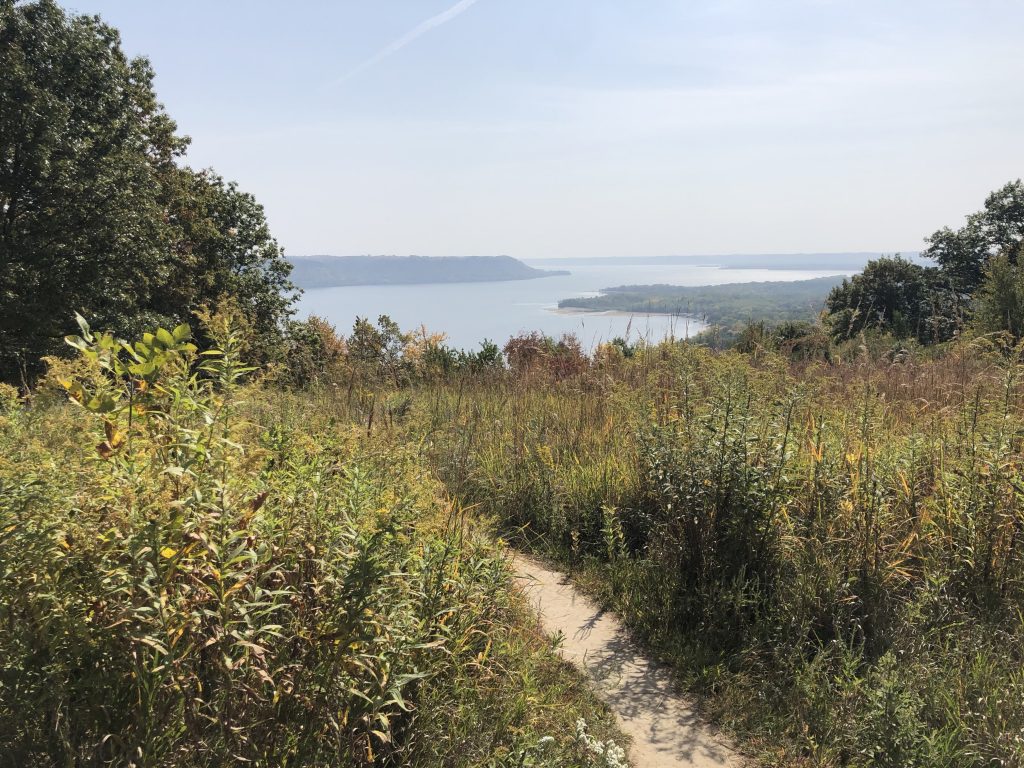
Our hike included several notable points of interest, including a close-up view of In Yan Teopa, a massive rocky arch supposedly steeped in Native American lore. Yan Teopa, which translates to “rock with opening,” is long speculated to have played a significant role in Native American religious practices. While the veracity behind this legend remains unsubstantiated, the rock formation nevertheless provides a picturesque stopping point for nature lovers and photographers looking to pause and embrace the inherent beauty of their surroundings.
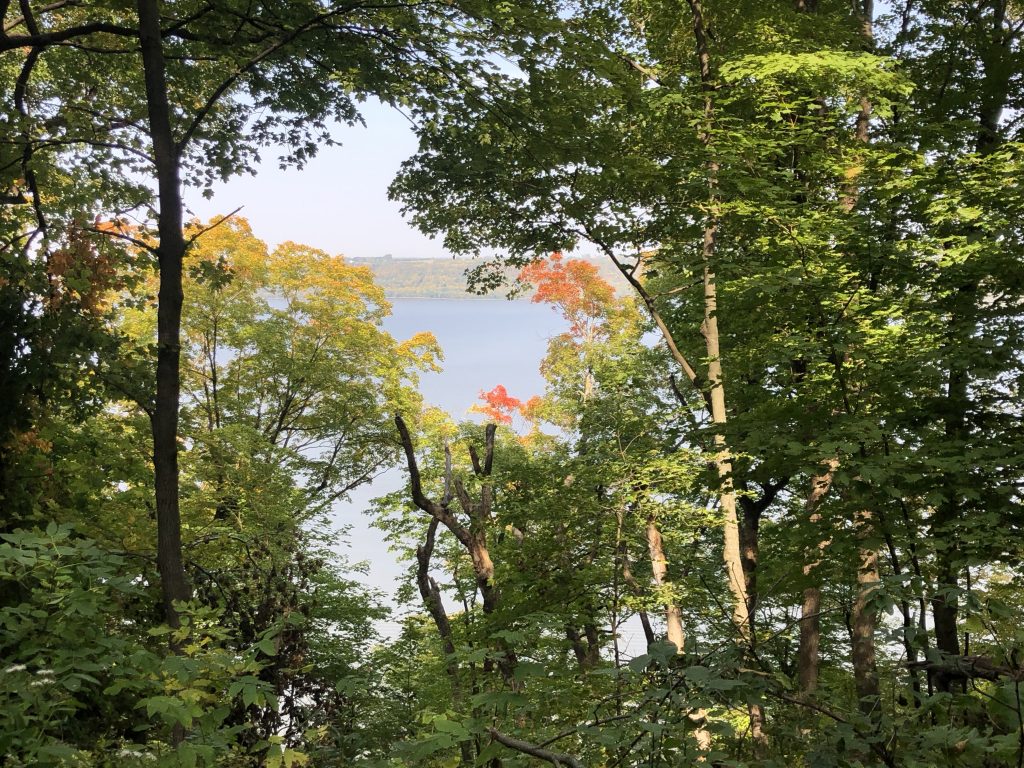
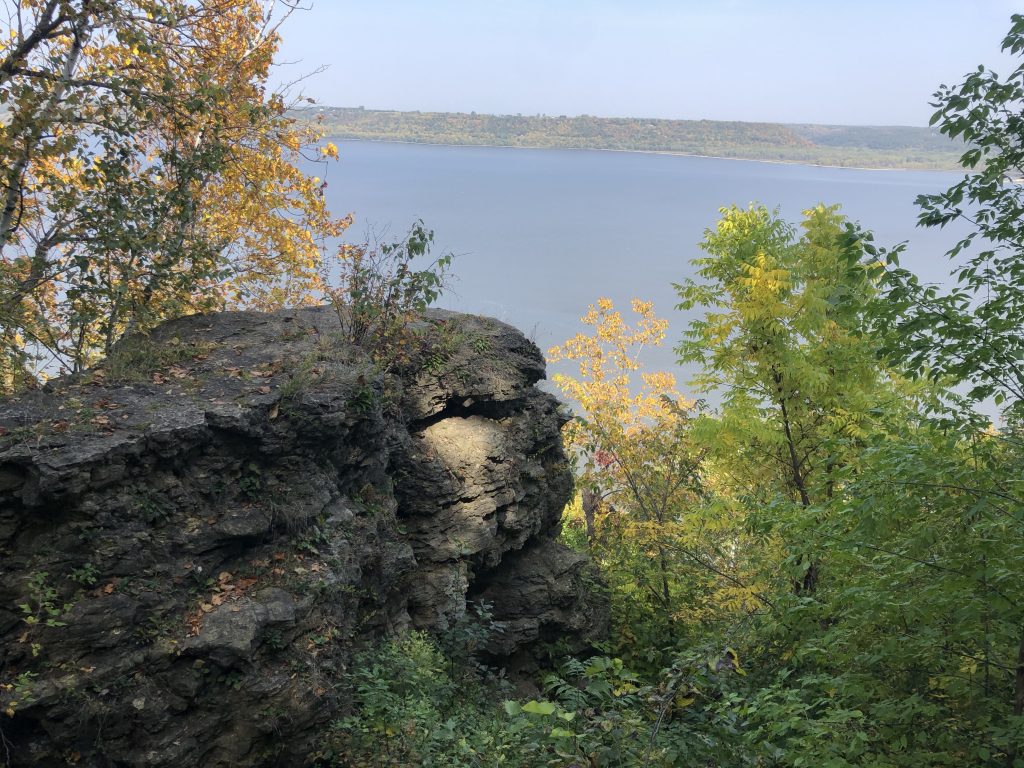
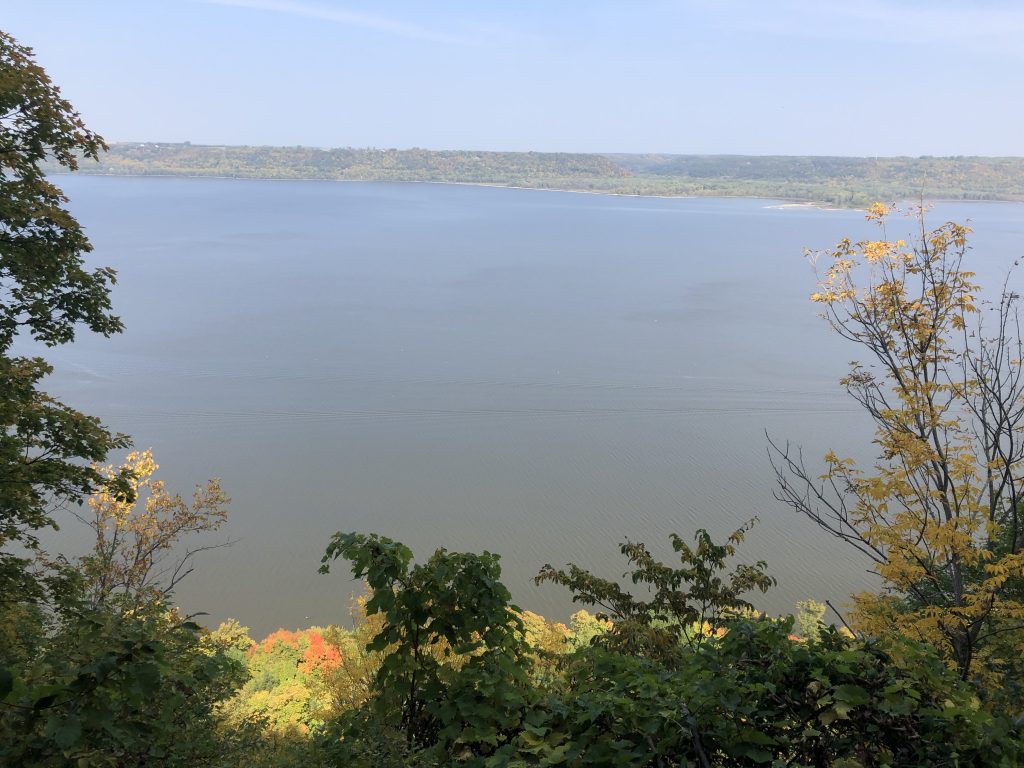
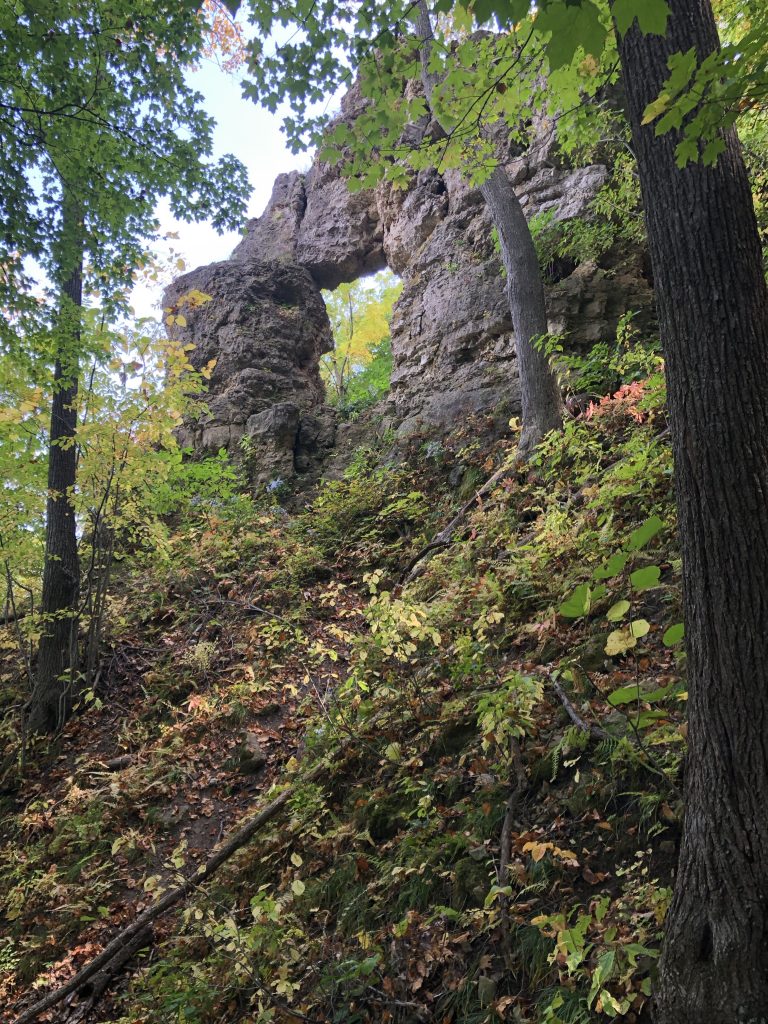
After a morning filled with hiking, Mom and I decided to make our way back downtown and do some shopping. Red Wing prides itself as “one of the most unique and charming places to visit along the Mississippi River,” and it’s true: In addition to the sweeping natural vistas, downtown Red Wing offers a wide array of local and family-owned businesses that make the city a one-of-a-kind getaway. From the Scandinavian-themed Uffda Shop which features authentic Norwegian, Icelandic, and Finnish wares, to the massive Duluth Trading Company which boasts a variety of adventure-ready hardcore outdoor gear, downtown Red Wing offers something for everyone. My favorite stop however, was the Red Wing Shoe Company and Museum, the clear hometown hero that functions as equal parts local storyteller and retail therapy provider. The museum even features the world’s largest boot that stands at over 20 feet tall and is made with the same materials that go into crafting the more popular “life-size” versions you can buy in the store. While the shoe company is now international, it’s neat to see where the boots are made and understand how they have come to both represent and define southeastern Minnesotan identity.

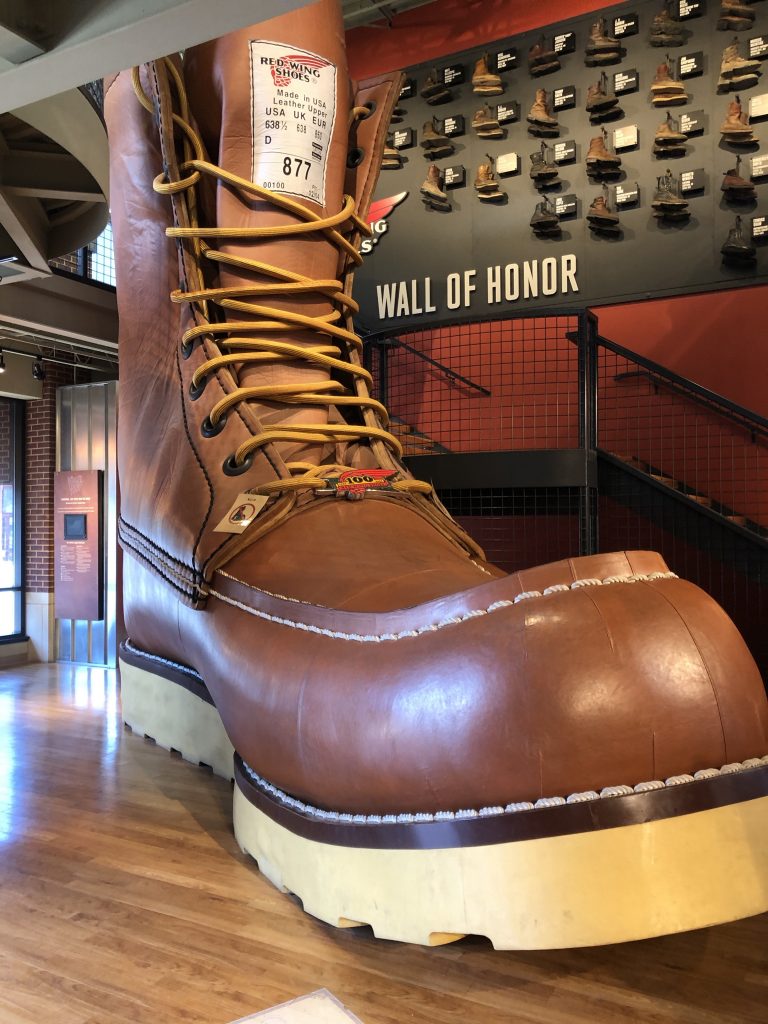

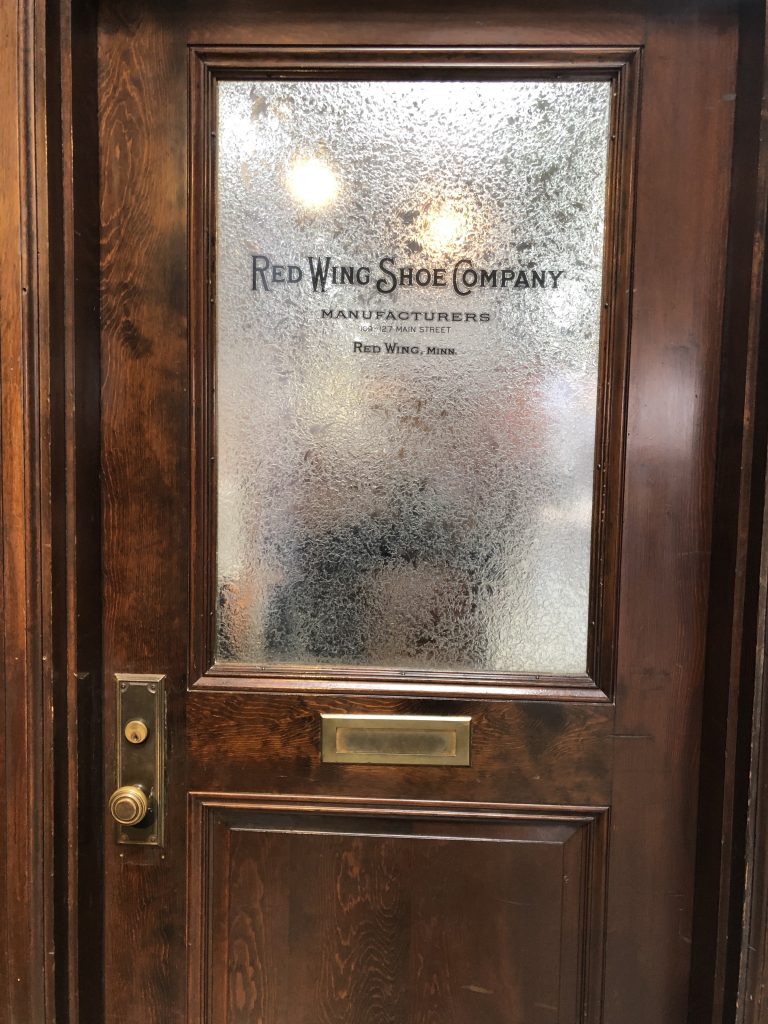
Our day trip to Red Wing was cathartic in so many ways. Throughout the entirety of the unseasonably mild, late September day I wore a tank top and shorts, eager to soak up some rays and enjoy a lingering seasonal moment that felt way past its prime. The magnificent “blue violet” of summer juxtaposed with the incredibly vivid, enticing colors of autumn took my breath away and grounded me in ways I could not have predicted. True, we had only traveled an hour south of Minneapolis, but I felt as if we had stepped into an entirely new world. As the earth etched fantastic formations below us and the sky seemingly stretched forever, it became clear that we had exposed ourselves to something wholly new, rich, and captivating, and, in doing so, had seized adventure by its Red Wing bootstraps and charted an exciting, unconventional adventure that was completely and utterly our own.
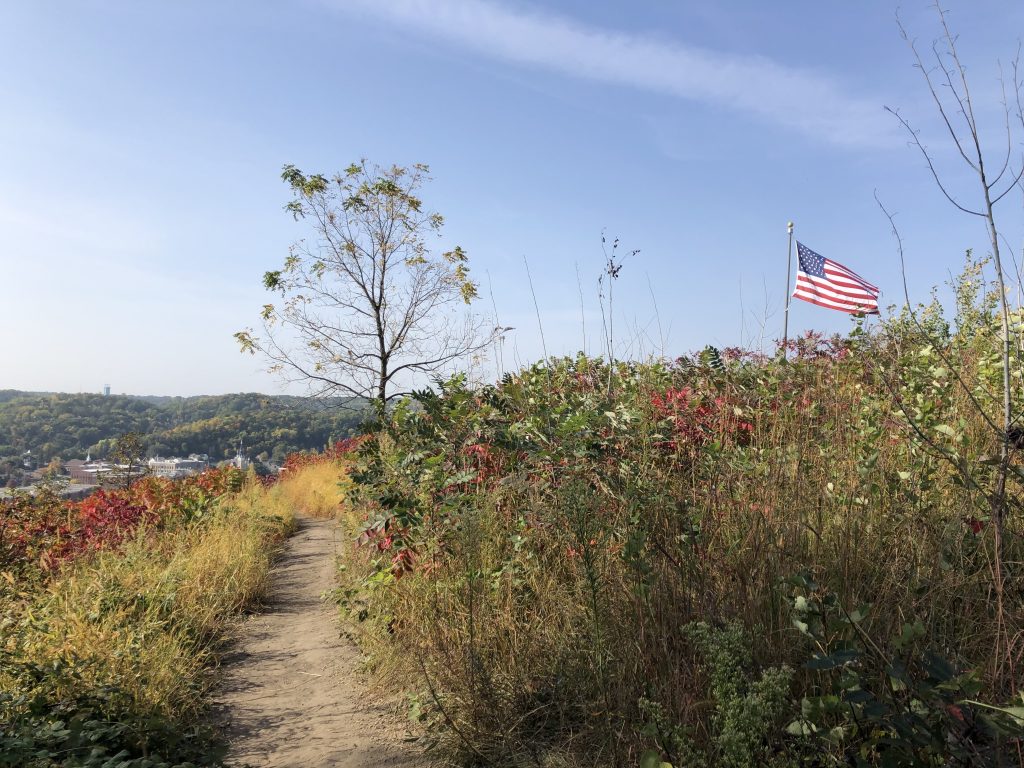
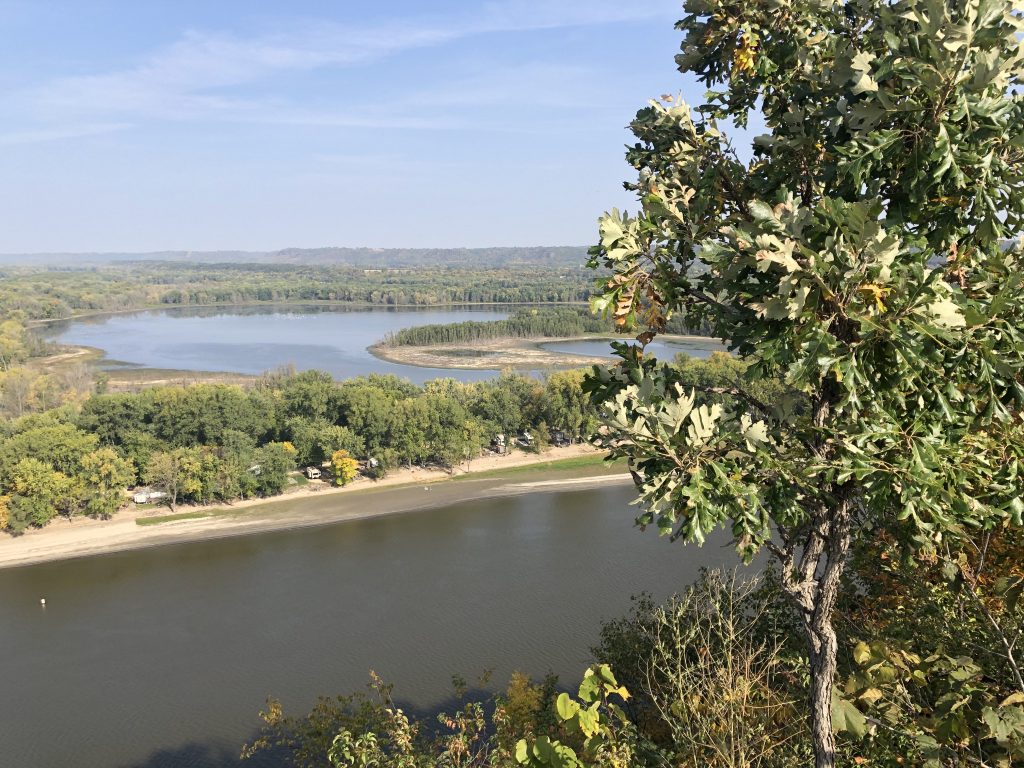

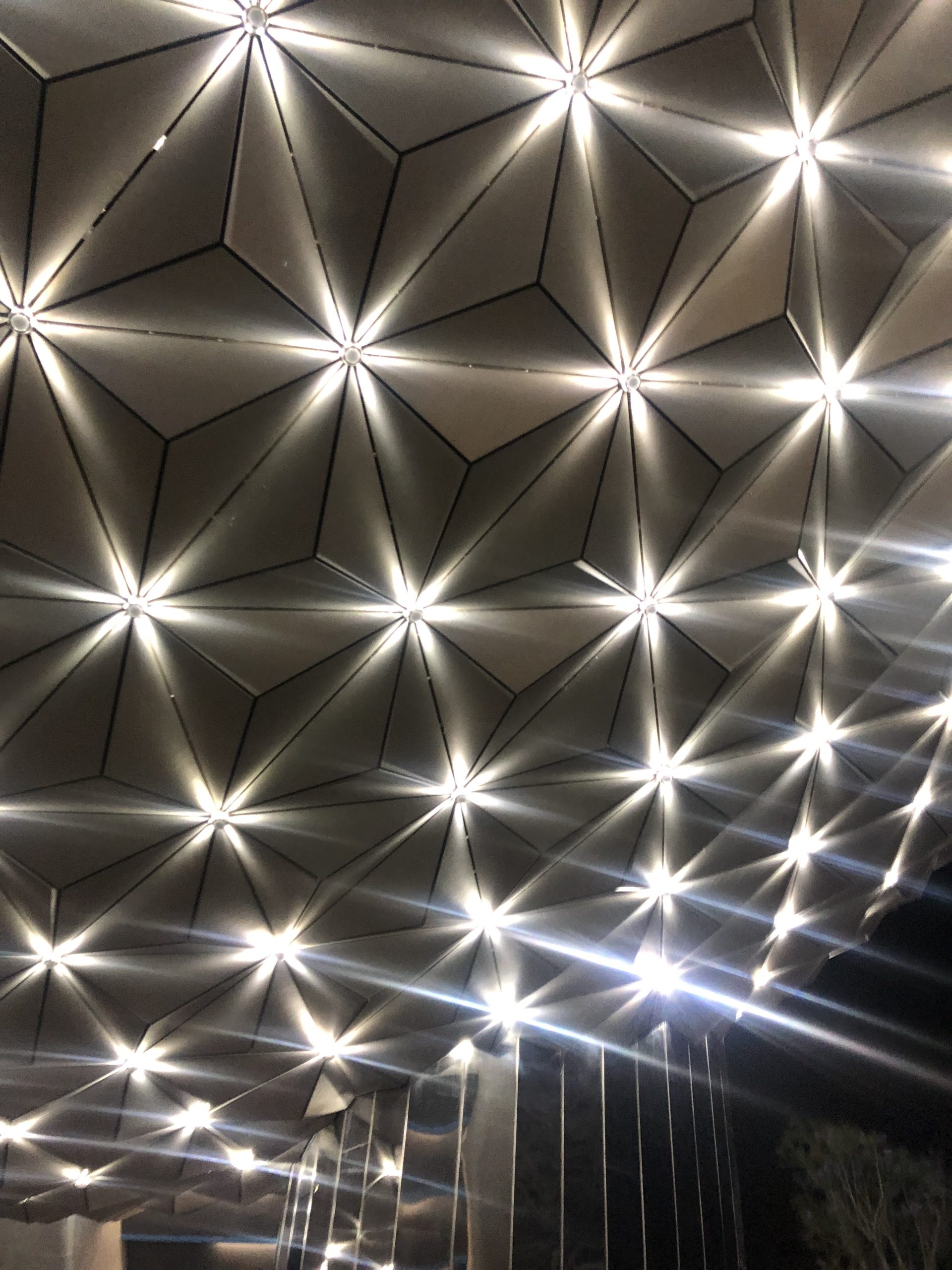

Comments are closed.